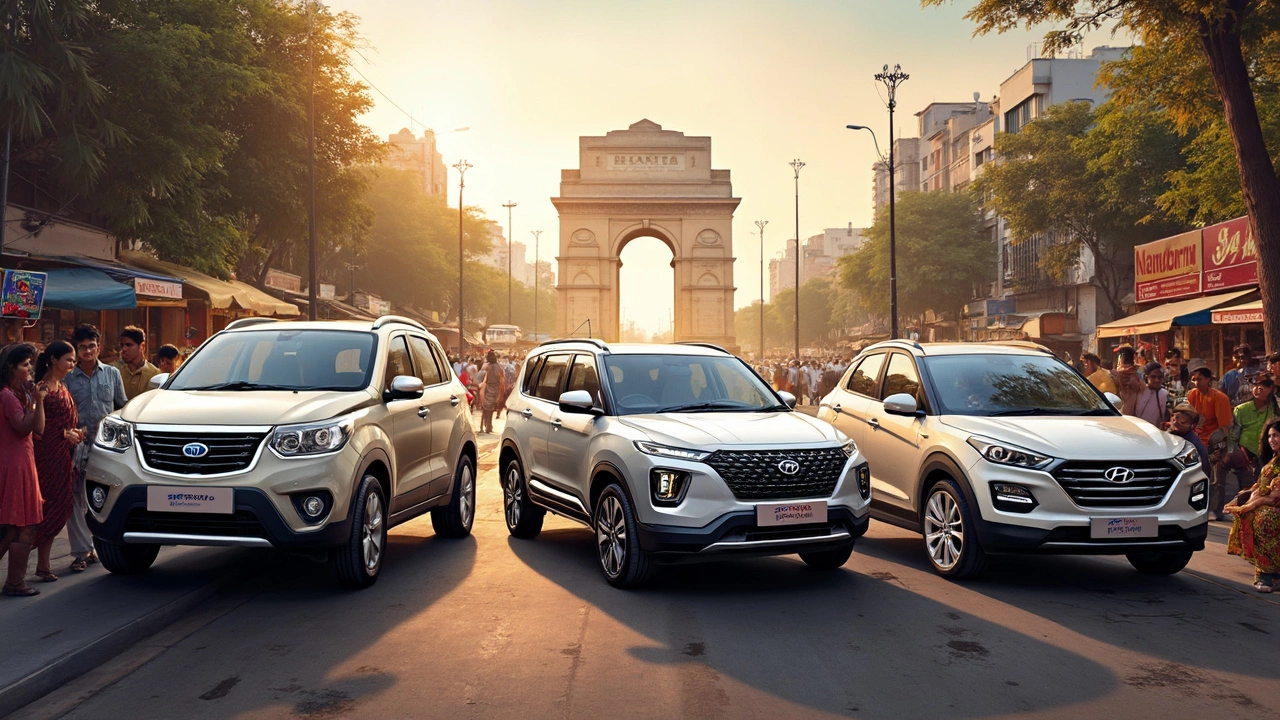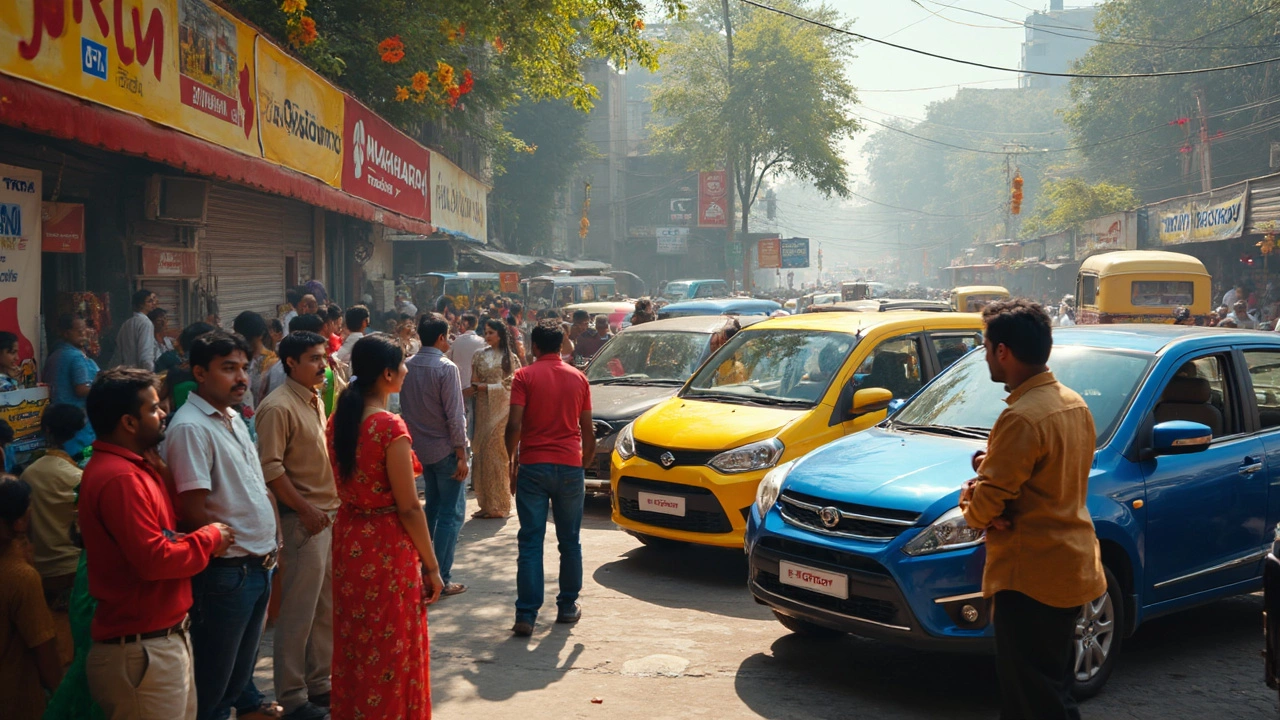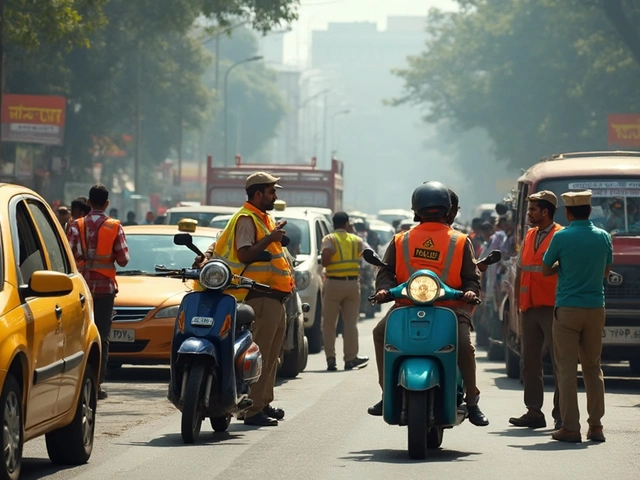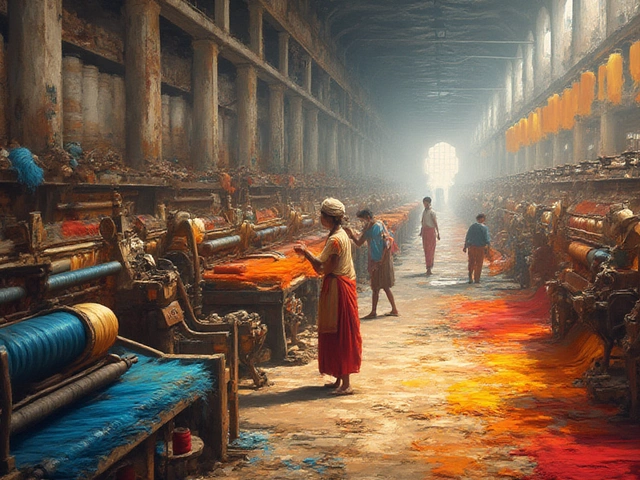Take a drive on any Indian road, from crowded city lanes to winding hill highways, and you’ll find something surprising: a fleet of cars proudly bred, born, and flourished right here in India. Some are household names plastered on billboards and TV ads. Others quietly churn out millions of cars that define the daily commute for families, college students, and business folks alike. If you’ve ever wondered, "Which brand of car truly comes from India?"—not just assembled, but conceptualized and built with local brains and brawn—stick around. There's more to India's car story than meets the eye.
Tata Motors: More Than Just Tata Nano
Ask any Indian about car brands from India and within seconds, Tata Motors will roll off their tongue. It’s a behemoth in local manufacturing, and the company’s journey began in 1945 making trains before zipping onto four-wheels. While the Tata Nano—the "lakhtakiya car" (one-lakh rupee car)—turned heads worldwide for its price tag, Tata's impact goes far deeper. Models like the Tata Tiago, Nexon, Altroz, and the beefy Harrier regularly tango with international competitors on the sales charts. The Nexon, for instance, leads the SUV segment in several Indian states.
But here’s where things really got interesting. Tata wasn’t content sticking to just the Indian circuit. It bought Jaguar and Land Rover in 2008, shocking the world. Suddenly, an Indian company called the shots for two storied British brands. Fast forward, Tata continues to steer innovations: their electric vehicles (Tata Nexon EV, Tigor EV) now top India’s EV charts. In 2024, Tata controlled around 12% of the Indian car market, slotting as a constant fixture in the top three.
Don’t think Tata is old-school, either. If crash test scores matter to you, their recent models are Gold-rated by Global NCAP. Interiors feel rich, infotainment is loaded, and smart features like voice commands keep cars fun and functional. Take a test drive, and you’ll see the uniquely Indian blend: ruggedness for Indian roads, wallet-friendliness, and modern design cues the youth buzz about.
Mahindra & Mahindra: Rough, Tough, and Iconic
Growing up in India, it was nearly impossible to miss a Mahindra jeep or SUV rumbling through city traffic or climbing muddy hillsides during monsoon. Mahindra & Mahindra, founded in 1945, made its name on reliable utility vehicles. The classic Mahindra Jeep went from army favorite to rural mainstay. Fast-forward to today, and Mahindra builds the Scorpio, XUV700, Thar, and Bolero—names that pop up wherever conversation turns to "toughest Indian SUVs." In fact, Mahindra has a cult-like following for the Thar, a homegrown answer to off-road cravings and open-top drives.
Mahindra is more than just steel and wheels. It's a pioneer in electric, too. Their e-Verito started as an experiment, and by 2025, Mahindra inked deals to roll out a new line of EV SUVs. They’re funneling billions into battery tech, with ambitious plans for EV-only plants near Chennai.
If you want a real-world stat: Mahindra and Tata together command around 20% of all cars sold in India (2024). Need to see why? Adventure travelers in Ladakh swear by their rugged vehicles that don’t quit on broken roads. Reliability, easy repairability (spare parts are everywhere), and a "desi" attitude keep Mahindra deeply woven into rural and city life alike.
Maruti Suzuki: India’s Car Icon, Born from Collaboration
You can’t talk about Indian car brands without Maruti Suzuki. Sure, it’s a joint venture—Suzuki of Japan holds the largest stake—yet Maruti has such a strong Indian identity, many forget its Japanese parentage. Since rolling out the Maruti 800 in 1983, it changed how Indians viewed cars: cheap, reliable, and simple to maintain.
Today, Maruti Suzuki’s Swift, WagonR, Alto, Dzire, and Brezza are top sellers every single month. On Indian streets, spotting a Maruti is easier than finding chai. Over 52% of cars sold new in India in 2024 wore a Maruti badge, making it the most trusted choice for first-time buyers, especially in smaller towns. Most models are produced in Gurgaon and Manesar, employing tens of thousands across huge factory complexes. Maruti has created whole careers around their service centers and driving schools.
But what sets Maruti apart isn’t just price. They dominate thanks to low running costs, unbeatable mileage, and a massive service network. A car owner in a remote village will pick Maruti knowing even the smallest town will have a mechanic who “gets” their car. In 2025, Maruti is diving deeper into CNG and hybrid tech—betting big on frugal, affordable mobility. If "Made In India" matters to you with a dash of "run forever reliability," Maruti wears that crown.

Other Proudly Indian Players
Think the list of Indian car makers stops with the big three? Not even close. Smaller brands and upstarts are blazing their own trails. Take Force Motors. Its Traveller mini-buses handle public transport, school buses, and ambulances, connecting rural villages to big cities. Then there’s Ashok Leyland, a Chennai-born giant in buses and a significant force behind India's defenses with their troop carriers and armored trucks.
Premier Automobiles—ring a bell? They built the iconic Premier Padmini, the classic Mumbai taxi for decades. Even Hindustan Motors, now faded, once dominated headlines with the grand Ambassador, the luxury sedan for governors, ministers, and diplomats for nearly 50 years.
Let’s not leave out newcomers. Companies like Ola Electric (yes, the same Ola behind your cab app) rolled out EVs by 2025, promising snazzy pocket-friendly cars for city life. Their gigafactory in Tamil Nadu is the biggest two-wheeler EV plant outside China.
- Indian car brands aren’t just surviving—they’re thriving and shaking up old rules.
- Most major Indian brands own their research labs and design studios, so the cars are not just knock-offs of global models. Unique looks, features, and even safety mods are done by and for Indian drivers.
- Spare parts are easier and cheaper to find, even in far-flung corners.
- Exports matter, too. In 2024, India exported over 700,000 cars worldwide, many by Tata, Mahindra, and Maruti.
How India Builds and Designs Its Cars
What does it mean to have a car “made in India”? It’s more than slapping on parts—it's deep local integration. Indian car manufacturing is massive: over 4 million passenger vehicles roll out every year, making India the world’s fourth-largest car maker. Plants like Tata's Pune campus and Maruti's mega-facility near Delhi are full-fledged cities, with thousands working across shifts.
Want data? Look at the domestic value-add—a Tata Nexon is built with more than 90% Indian-sourced parts. Even fancy interiors, infotainment systems, and critical safety features are designed and supplied locally. The target? Lower costs, quick repairs, and customizable features for picky Indian buyers. Mahindra’s design centre in Mumbai, for example, works closely with global teams but final decisions are shaped by Indian market feedback. That’s why Mahindra SUVs have ground clearance for potholes, strong AC for summer, and sturdy suspensions for village roads.
Here’s an interesting trend: Many global car companies (Hyundai, Toyota, Honda) use India as a global export hub. But for truly "Indian brands," the ambition is super-local—cars that speak your language, handle the heat, and embrace the diversity of Indian roads and cultures.
| Brand | Founded Year | Popular Models | Market Share (2024) | Export Destinations |
|---|---|---|---|---|
| Tata Motors | 1945 | Nexon, Tiago, Harrier | 12% | UK, S Africa, Nepal |
| Mahindra | 1945 | Scorpio, Thar, XUV700 | 8% | Australia, UAE, S Africa |
| Maruti Suzuki | 1981 | Swift, WagonR, Alto | 52% | Indonesia, Chile, Egypt |
| Ashok Leyland | 1948 | City Bus, Dost | NA | Gulf, Africa |
For buyers, buying an Indian brand means better suitability for local needs, cheaper spare parts, and strong resale value. Many banks even provide lower-interest loans for some Indian brands, recognizing their lower risk due to better serviceability.
Tips for Buyers: Getting the Most from an Indian Car Brand
Confused by all the choices? Try this checklist to narrow it down:
- Pick a brand with a wide service network in your hometown or where you work—this cuts downtime if you need repairs.
- Look at running costs: mileage is king in India. Tata, Maruti, and Mahindra make some of the most fuel-efficient cars—many give 20+ km/litre on highways.
- Explore resale value. Maruti and Tata cars fetch good prices due to their dependability and parts availability.
- Test drive on real local roads—not just the smooth dealership driveway—to see how the suspension and AC hold up.
- If you want electric, check if the brand offers home charging and support. Tata’s Nexon EV is a current hit for city users, while Mahindra’s EVs promise ruggedness for those off usual paths.
- Read up on crash test scores. Indian car makers have made big leaps in safety, especially in the last five years.
One last tip: Don’t hesitate to talk to mechanics or cabbies—nobody knows which Indian-made cars last longer than the people who use them 24/7. Their lived experiences often say more than glossy brochures ever could.
So, next time you see a car proudly flying an Indian badge—be it a slick Tata sedan or a rumbling Mahindra SUV—remember, it’s not just a vehicle. It's a piece of innovation, culture, and resilience on wheels, crafted for and by the people who live and thrive in the chaos, color, and challenge of India’s roads.








